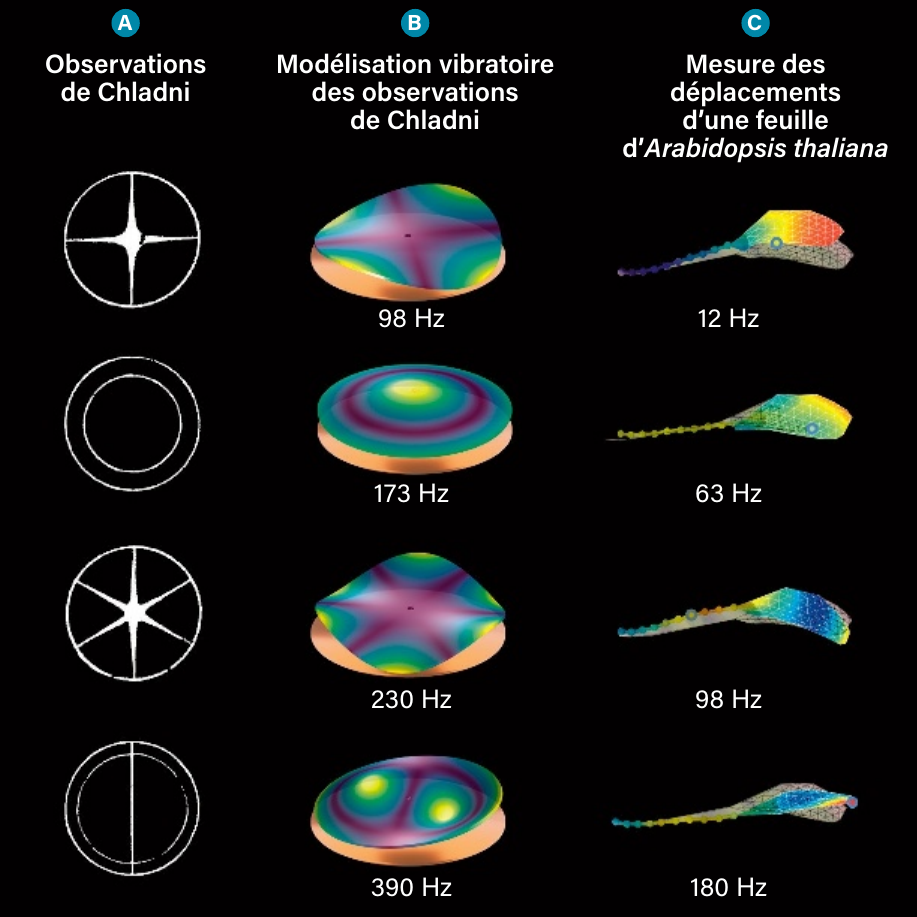Biophysical interactions between plants and sound
This page displays the new studies that I have been working on under the topic of phytoacoustics:
Dissemination article for the journal "Pour la Science" on The effect of sound on plants

This piece of dissemination work gives an overview on the subject of mechanical perception by plants. On the one hand, it hints at the few known ways plants have been known to produce sound, e.g., bubbles in vascular system. On the other hand, it highlights the main biological mechanorepectors present in most plants, e.g., ionic canals, cell microtubules, or trichomes, which would be responsible for playing a major role in their perception of sound and vibrations.
Looking at a plant in terms of mechanical vibrations upon a solid body, similar structural analyses can be made in order to determine how these would respond to mechanical stimuli. Considering a leaf as a body similar to that of a plate, it has been known since the pioneering works of Ernst Chladni back in the 18th century that some "resonant modes" of the solid object could be observed and predicted depending on its mechanical propreties (i.e., density, Young's modulus, Poisson's ratio) as well as the shape and thickness of said object. By Rubbing a bow on the edge of a copper disc copper disc sprinkled with fine sand, Ernst Chladni observed that the sand organized itself in geometric patterns, typical of the vibration modes of the disc (A). More more generally, these observations show that every structure responds to a given load by favouring certain specific frequencies that depend on its shape depend on its shape, composition and its environment. Considering a leaf of Arabidopsis Thaliana we can observe that it behaves in a manner akin to that a copper disc (B). The amplitude of its displacements depends on the frequency, and the leaf has frequencies at which its mechanical response its mechanical response is maximal.
The question of whether maximum mechanical responses (C) correspond to increased sensitivity remains to be entirely solved, but many hints start to appear as research goes on.